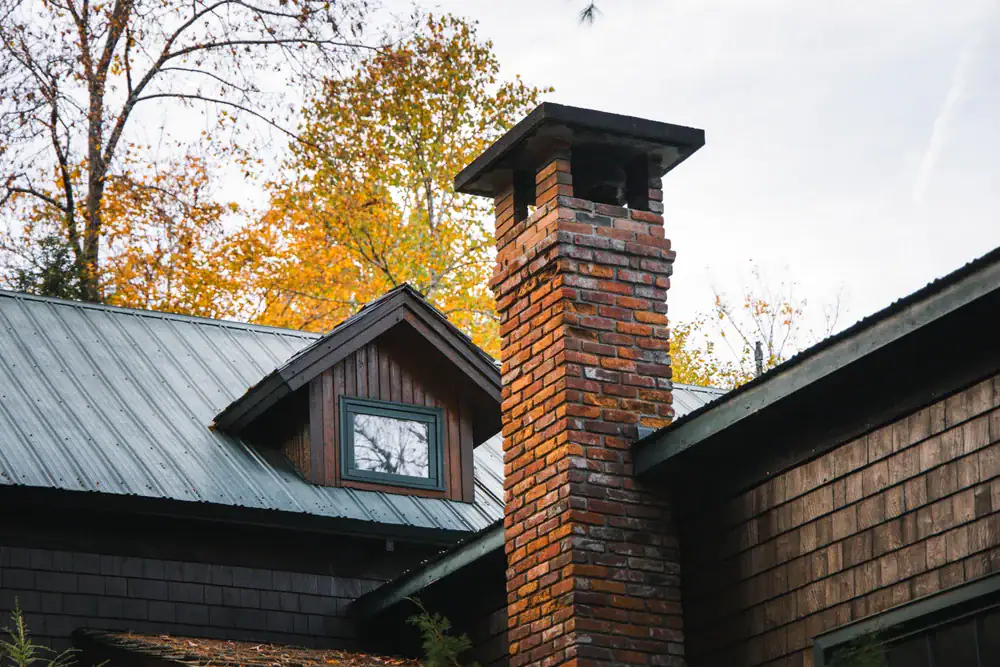Summary:
Why Annual Chimney Inspections Are Required in Minnesota
The National Fire Protection Association doesn’t make suggestions—they set standards that save lives. NFPA 211 requires annual chimney inspections for every home with a fireplace, wood stove, or heating appliance, regardless of how often you use it.
Minnesota’s climate makes this requirement even more critical. Our freeze-thaw cycles create unique stresses on chimney structures that simply don’t exist in warmer climates. When temperatures plummet below zero and then swing back above freezing, your chimney materials expand and contract repeatedly, creating cracks and weakening joints that become serious safety hazards.
Professional inspections catch these problems before they become dangerous. A certified technician can spot a hairline crack in your flue liner or detect early signs of water damage that you’d never notice until it’s too late.
What Happens During a Professional Chimney Inspection
A real chimney inspection isn’t someone poking around with a flashlight for five minutes. We follow NFPA standards that define three distinct levels of inspection, each designed for specific situations and needs.
Level 1 inspections cover the basics—examining accessible interior and exterior surfaces, checking structural integrity, and confirming that heating appliances connect properly to your chimney. This is your standard annual inspection when nothing has changed about your system or how you use it.
Level 2 inspections go deeper, literally. These use specialized camera equipment to examine areas that can’t be seen with the naked eye, like the interior of your flue. You’ll need this level when buying or selling a home, changing fuel types, or after any event that might have damaged your chimney—like a lightning strike or earthquake.
Level 3 inspections are the most comprehensive, involving partial dismantling of your chimney when serious hazards are suspected. Most homeowners never need this level, but it’s essential when safety has been compromised by major damage or construction defects.
During any inspection, we check for creosote buildup, examine your chimney liner for cracks or damage, test your damper operation, inspect the chimney crown and cap, and look for signs of water intrusion or structural problems. We’re trained to spot issues that could cause fires, carbon monoxide leaks, or expensive structural damage.
The inspection also includes checking clearances around your chimney to ensure combustible materials aren’t too close, verifying proper ventilation, and confirming that your entire system meets current safety codes. This isn’t just about meeting requirements—it’s about protecting your family and your home investment.
Minnesota Winter Damage Your Chimney Faces Every Year
A real chimney inspection isn’t someone poking around with a flashlight for five minutes. We follow NFPA standards that define three distinct levels of inspection, each designed for specific situations and needs.
Level 1 inspections cover the basics—examining accessible interior and exterior surfaces, checking structural integrity, and confirming that heating appliances connect properly to your chimney. This is your standard annual inspection when nothing has changed about your system or how you use it.
Level 2 inspections go deeper, literally. These use specialized camera equipment to examine areas that can’t be seen with the naked eye, like the interior of your flue. You’ll need this level when buying or selling a home, changing fuel types, or after any event that might have damaged your chimney—like a lightning strike or earthquake.
Level 3 inspections are the most comprehensive, involving partial dismantling of your chimney when serious hazards are suspected. Most homeowners never need this level, but it’s essential when safety has been compromised by major damage or construction defects.
During any inspection, we check for creosote buildup, examine your chimney liner for cracks or damage, test your damper operation, inspect the chimney crown and cap, and look for signs of water intrusion or structural problems. We’re trained to spot issues that could cause fires, carbon monoxide leaks, or expensive structural damage.
The inspection also includes checking clearances around your chimney to ensure combustible materials aren’t too close, verifying proper ventilation, and confirming that your entire system meets current safety codes. This isn’t just about meeting requirements—it’s about protecting your family and your home investment.
How Professional Chimney Cleaning Prevents House Fires
Every year, over 25,000 chimney fires cause more than $125 million in property damage across the United States. The vast majority of these fires are completely preventable with proper cleaning and maintenance.
Creosote is the enemy you can’t see. This highly flammable byproduct of burning wood accumulates on your chimney walls every time you use your fireplace. Even if you burn only seasoned hardwood and maintain perfect fires, creosote still builds up over time. When it reaches dangerous levels, all it takes is one hot fire to ignite this buildup and create a chimney fire that can spread to your entire home.
Professional cleaning removes this hazardous buildup before it becomes dangerous. We use specialized equipment and techniques to thoroughly clean your entire flue system, removing not just visible soot but also the glazed creosote deposits that are impossible to remove with DIY methods.
The Hidden Dangers of Skipping Annual Cleaning
Most homeowners think they’ll know if their chimney needs cleaning. They assume they’ll see obvious signs or smell something wrong. The reality is much more dangerous—many chimney problems develop silently, giving you no warning until it’s too late.
Creosote buildup often happens gradually and isn’t always visible from below. The most dangerous type, called glazed creosote, forms a shiny, tar-like coating that’s extremely flammable and nearly impossible to remove without professional equipment. This type of buildup can ignite at relatively low temperatures, creating intense fires that can crack your flue liner and spread to combustible parts of your home.
Blockages are another hidden danger. Animals can build nests in your chimney during spring and summer when you’re not using your fireplace. Leaves, branches, and other debris can also accumulate, especially if you don’t have a proper chimney cap. These blockages prevent proper ventilation, causing dangerous gases like carbon monoxide to back up into your home instead of venting safely outside.
Water damage from delayed maintenance creates a cascade of problems. Small cracks that could be easily repaired with routine maintenance become major structural issues when water penetrates and freezes. Damaged mortar joints allow more water intrusion, which leads to more damage, creating an expensive cycle that could have been prevented with annual inspections.
The cost of emergency repairs far exceeds the cost of preventive maintenance. A chimney fire can require complete flue liner replacement, masonry repairs, and restoration of fire-damaged components. Water damage from neglected maintenance can require extensive masonry work, interior repairs, and mold remediation. These emergency situations often happen at the worst times—during peak heating season when you need your fireplace most.
Professional cleaning also identifies problems early when they’re still minor and affordable to fix. A small crack in your chimney crown can be sealed for a few hundred dollars during routine maintenance, but if left untreated, it can lead to thousands of dollars in water damage and structural repairs.
What Professional Cleaning Actually Removes From Your Chimney
Professional chimney cleaning goes far beyond what most homeowners imagine. It’s not just about removing visible soot—it’s a comprehensive process that eliminates multiple types of dangerous buildup and identifies potential hazards throughout your entire chimney system.
Creosote comes in three distinct stages, each more dangerous than the last. Stage 1 creosote is flaky and relatively easy to remove, but Stage 2 forms tar-like deposits that require specialized tools. Stage 3 creosote creates a hard, glazed coating that’s extremely flammable and can only be removed with professional-grade equipment and techniques. Most homeowners have no idea which stage of creosote they’re dealing with, making professional assessment essential.
Animal debris and nests present serious fire hazards that aren’t always obvious. Birds often build nests in chimneys during spring and summer, using highly flammable materials like twigs, leaves, and paper. These nests can completely block your flue, preventing proper ventilation and creating conditions for dangerous gas buildup. Even after animals leave, the remaining debris continues to pose fire risks.
Mineral deposits from water intrusion can gradually reduce your flue’s diameter, affecting draft and increasing fire risk. These white, chalky deposits indicate ongoing moisture problems that need professional attention. Left untreated, they can combine with creosote to create even more dangerous conditions.
We also remove rust flakes from metal components, check for and clear minor blockages, and clean smoke chambers and damper areas that homeowners can’t safely access. We inspect and clean chimney caps and screens, removing debris that could prevent proper function or create fire hazards.
The cleaning process includes checking for proper clearances, testing damper operation, and ensuring that all components work together safely. This comprehensive approach catches problems that DIY cleaning methods miss entirely, providing the thorough protection your family deserves.
During cleaning, we also identify maintenance needs like loose or missing mortar, damaged flashing, or worn chimney caps. Addressing these issues during routine maintenance prevents the emergency repairs that cost thousands of dollars and leave your home vulnerable during Minnesota’s harsh winters.
Protecting Your Twin Cities Home With Professional Chimney Care
Your chimney isn’t just another home maintenance item you can put off until next year. It’s a critical safety system that protects your family from fire and carbon monoxide poisoning while providing reliable heat during Minnesota’s coldest months.
Annual inspections and professional cleaning aren’t expensive when you consider what they prevent—house fires, emergency repairs, and the peace of mind that comes with knowing your family is safe. The small investment in preventive care saves thousands in potential damage and protects the people who matter most to you.
Don’t wait until you smell smoke in your living room or notice water stains around your fireplace. Contact Suburban Chimney Solutions today to schedule your annual inspection and cleaning, and give your family the protection they deserve.



